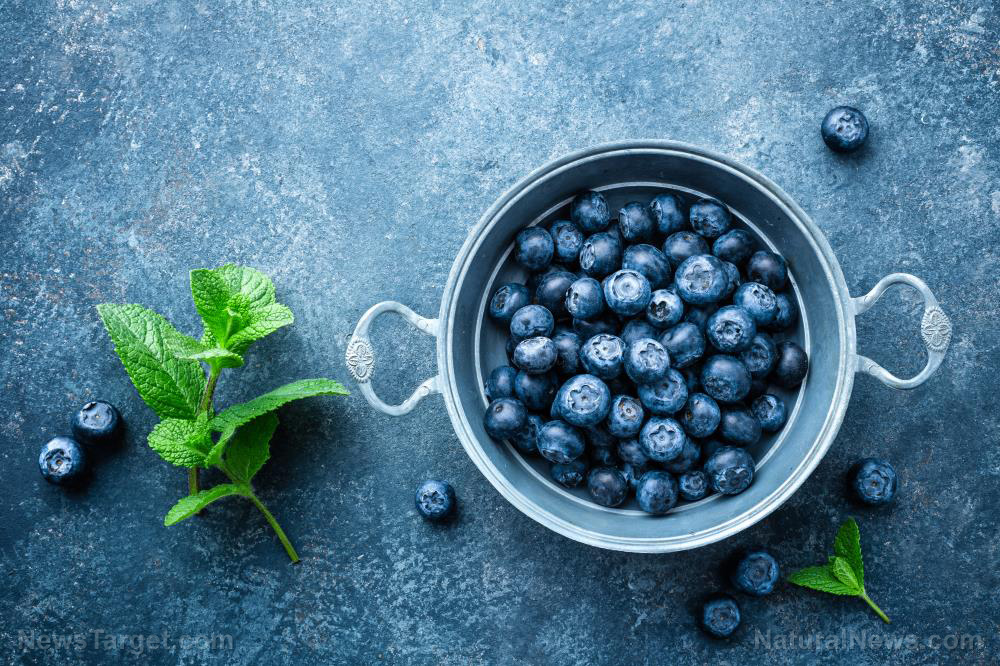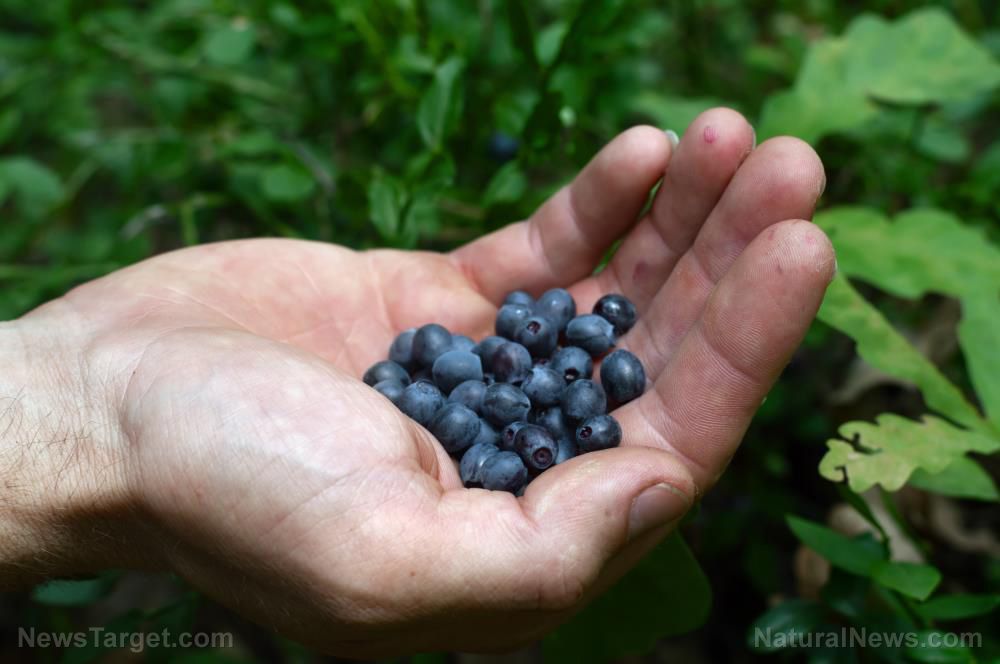
Advertisement
You can find blue pretty much anywhere – just look at our skies and oceans. But it’s quite a rare color in nature compared to, for instance, green or orange.
For this reason, blue foods might sometimes come across as unnatural, raising suspicions of artificial coloring. But there are a handful of so-called blue foods in nature that are linked to a range of health benefits.
Health benefits of blue foods
In the past, dark shades of blue and purple had been used to denote grandeur and richness. So it might not be a coincidence that blue foods boast rich nutritional profiles chock-full of incredible nutrients, antioxidants and beneficial plant compounds.
There aren’t a lot of blue foods out there, and those that are tend to appear during specific seasons, like blueberries and blackberries. Take note of these blue foods and their health benefits and don’t forget to grab them during their peak seasons!
Blueberries
Blueberries are the king of antioxidant foods. These bright berries are thought to contain one of the highest amounts of antioxidants of all common plant-based fruits, not just other berries.
In fact, most of the antioxidants in blueberries appear in the form of anthocyanins. These are the plant pigments responsible for the bright skins of the berries. You’ll also find them in other bright or dark blue foods.
Existing studies on blueberries have explored the fruits’ anti-cancer potential and brain-boosting effect, among other health benefits. In fact, one clinical trial on 10 male participants demonstrated that just 300 grams (g) of blueberries could protect DNA from free radical damage that could trigger cancer.
Some studies also suggest that a diet rich in anthocyanins from blueberries can protect against other chronic diseases besides cancer, such as heart disease and diabetes.
Blackberries
Blackberries are a lot less popular than blueberries because of their characteristic tart flavor. But don’t let that keep you from snacking on these antioxidant-rich fruits.
On top of their incredible amounts of anthocyanins, blackberries are also abundant in vitamin C. This micronutrient has long been studied for its beneficial effects on immune health.
Vitamin K, another micronutrient found in blackberries, is essential for brain health, bone health and blood clotting. It also doesn’t hurt that a single cup of blackberries packs about eight g of fiber, an essential macronutrient for digestion and blood sugar regulation.
Blackberries also boast significant amounts of manganese, a nutrient essential for bone health, disease prevention and blood sugar regulation. In addition, these dark berries are abundant in vitamin A, a micronutrient that doubles as an antioxidant to protect the eyes.
Elderberries
Elderberries might not be as popular as their relatives on this list, but these tart berries are fast becoming a superstar thanks to its reputed effects against colds.
Like its relatives, elderberries’ immune-boosting and cold-fighting actions are all thanks to their high anthocyanin content. But that’s not all: elderberries are also chock-full of vitamin C and vitamin B6, another important nutrient for immune health.
In fact, just one cup of elderberries provides more than half of the recommended daily value (DV) for vitamin C and about 20 percent of the DV for vitamin B6. Therefore, snacking on these more than once daily should be enough to boost our immune response against infection and disease.
Furthermore, elderberries are an excellent source of phenolic acids and flavonols. Phenolic acids are antioxidants that help protect cells from free radical-induced damage. Flavonols like quercetin and kaempferol are also capable of conferring the same protective effects.
Concord grapes
Believe it or not, the color of Concord grapes still confounds botanists as it’s neither blue nor purple. But their ambiguous color doesn’t detract from their significant amounts of anthocyanins.
Their thick, dark purple skins hold most of their health-promoting plant nutrients. For this reason, some health enthusiasts might argue against juicing them and promote eating them as-is instead.
But don’t fret. Some studies suggest that drinking Concord grape juice can strengthen the immune system thanks to their various flavonoids, including resveratrol. This plant compound acts as an antioxidant, protecting cells from damage that can raise the risk of cancer and other chronic conditions.
And although all types of grapes are healthy, red grapes and Concord grapes contain the most flavonoids. So if you’re looking for a delicious and nutritious fruit to eat for dessert, opt for these blue-purple grapes.
Blackcurrants
Despite their name, the skin of blackcurrants has more of a deep, blue-ish purple hue than black. For a long time, farmers in the US had called blackcurrants the “forbidden fruit” because of the misconception that the berries helped spread a fungus that killed pine trees.
But blackcurrants are fast becoming popular again in the realm of health foods. These tart berries contain a notable amount of immune-boosting vitamin C. In fact, just one cup of fresh blackcurrants provides more than double the DV for vitamin C.
Besides boosting overall immune health, vitamin C also helps protect cells from the harmful effects of oxidative stress and free radical-induced damage. Earlier studies also found that vitamin C in blackcurrants offers significant protection against chronic conditions like heart disease.
Damson plums
Great Britain’s damsons or damson plums can taste bitter and unpleasant, so it’s no surprise that these plums aren’t the most popular foods around.
But you might not regret giving these plums a chance. Recent studies found that damson plums, also called damask plums, have quite an impressive nutritional profile.
Rich in fiber, vitamin C, riboflavin and various essential minerals, damson plums offer a range of therapeutic benefits, from better digestion to cancer prevention.
Because of their characteristic bitter flavor, damsons are hardly consumed as-is. Instead, these plums are processed into jams or jellies or dried to make prunes.
Blue tomatoes
These bizarre tomatoes might not look like their bright red counterparts, but both have something important in common: lycopene.
You might even argue that blue tomatoes, also called Indigo Rose tomatoes, are healthier than the standard red ones because of the potent combination of their anthocyanins and lycopene.
Together, these antioxidants can confer many therapeutic benefits, including sun protection and better heart health.
Furthermore, earlier studies have linked lycopene to cancer prevention. Scientists found that lycopene has the potential to stop the spread of cancer cells and stimulate the production of enzymes that degrade carcinogens.
Eating blue tomatoes could also help fight chronic inflammation and minimize the risk of stroke.
Blue and purple foods are excellent sources of antioxidants, essential nutrients and potent plant compounds for optimal health and nutrition. Eat them as part of a balanced diet, alone or incorporated in recipes, to make the most of their health benefits.
Sources:
Advertisements







